The Sierra Skies Observatory is a re-build of the Gecko Observatory, moved from Dallas, TX to El Dorado Hills, CA. Please see "Construction" section for a complete story on the building of the observatory. |  |
 | The Sirius observatory dome is a 2.3 m (approx. 91") diameter fiberglass structure which rotates on a "dome ring", and incorporates two shutters to close the slit - one which slides up and over the top of the dome, and the other which folds down, as visible in this image. I originally thought this design was "klunky" compared, for example, to the Technical Innovations ProDome - which incorporates entirely sliding shutters. Also, the slit of this small dome is only about 18", while the slit of the ProDome 10' is 30". This makes alignment of the scope to the dome (using the AutomaDome software) much more critical. It also precludes imaging with both the 12" LX200R and the FSQ-106 simultaneously - as the overall size from side-to-side of the combined optics is more than 18". Sirius is an observatory dome maker located in Australia. |
The Sirius dome rings are mounted on a 10'x10' building designed and built by Troy Duval (Dallas, TX), which is sitting on a deck that I built in our backyard. |  |
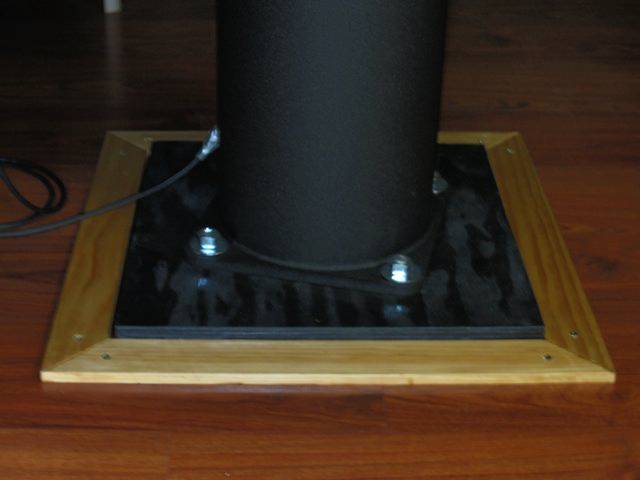 | The telescope pier (a Software Bisque 12" diameter x 36" tall pier) is bolted to the concrete pier that was poured prior to building the deck. There is approximately one ton (2,000 lbs / 900Kg) of concrete with rebar connecting the pier to the surrounding hill. Other than earthquakes, we do not expect the pier to move, so the scope should remain well-aligned. you can see that the pier J-bolts (embedded in the concrete pier) come up the perfect height, relative to the observatory floor. |
The Sirius dome is controlled by a MaxDome II computer system. This includes dual (identical) computers on the lower part of the dome (seen here), and on the rotating upper portion (seen in the next photo, below). The two computers communicate wirelessly via RF, using the two yellow wires in the picture as antennae - the lower one connects to the lower dome computer, and the upper one connects to the rotating (upper) dome computer. If connection is ever lost between these two computers, or between the main computer (shown at right) and the observatory laptop, for 10 minutes, then the dome shutters automically are closed. This is a safety measure, so that if there is a computer crash, power failure, or other fault, the observatory is closed directly, ensuring that rain will not get on the equipment. | 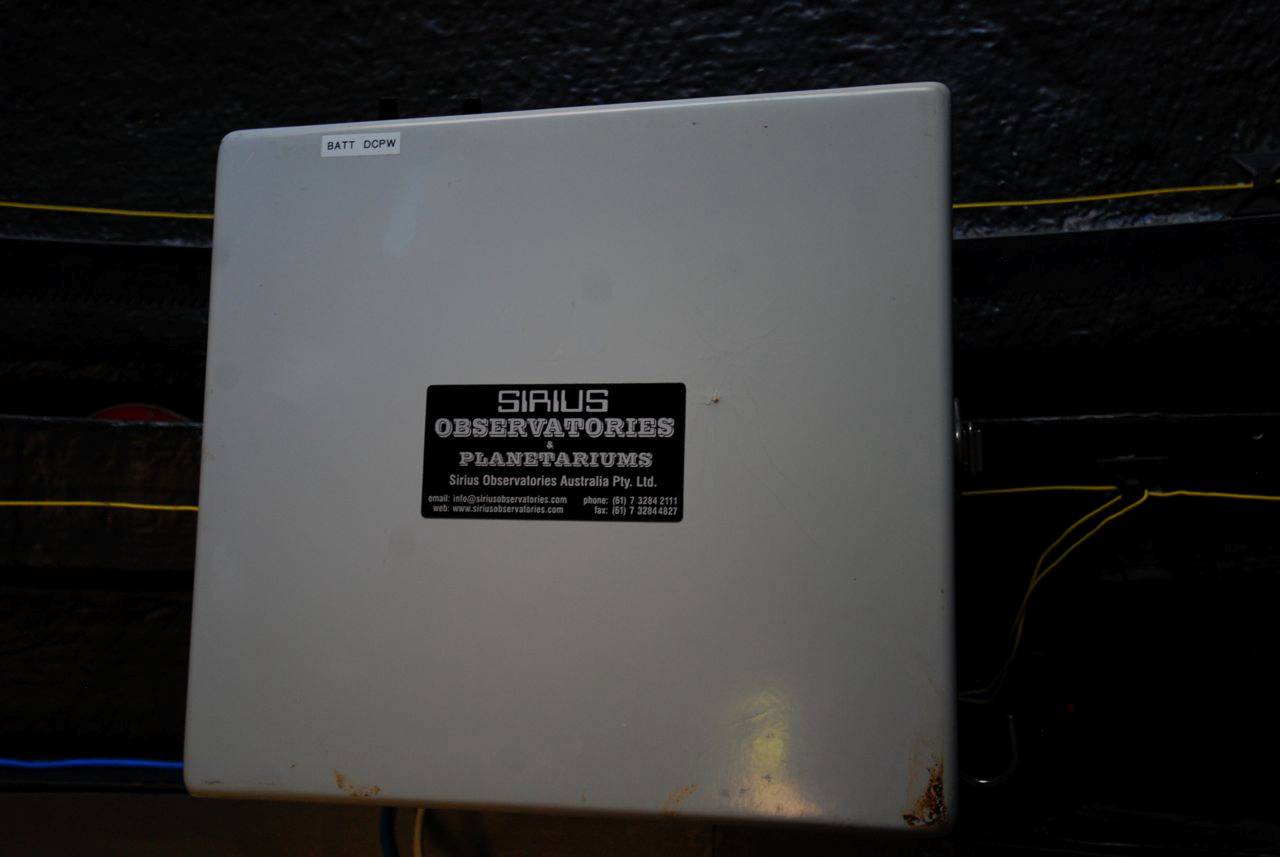 |
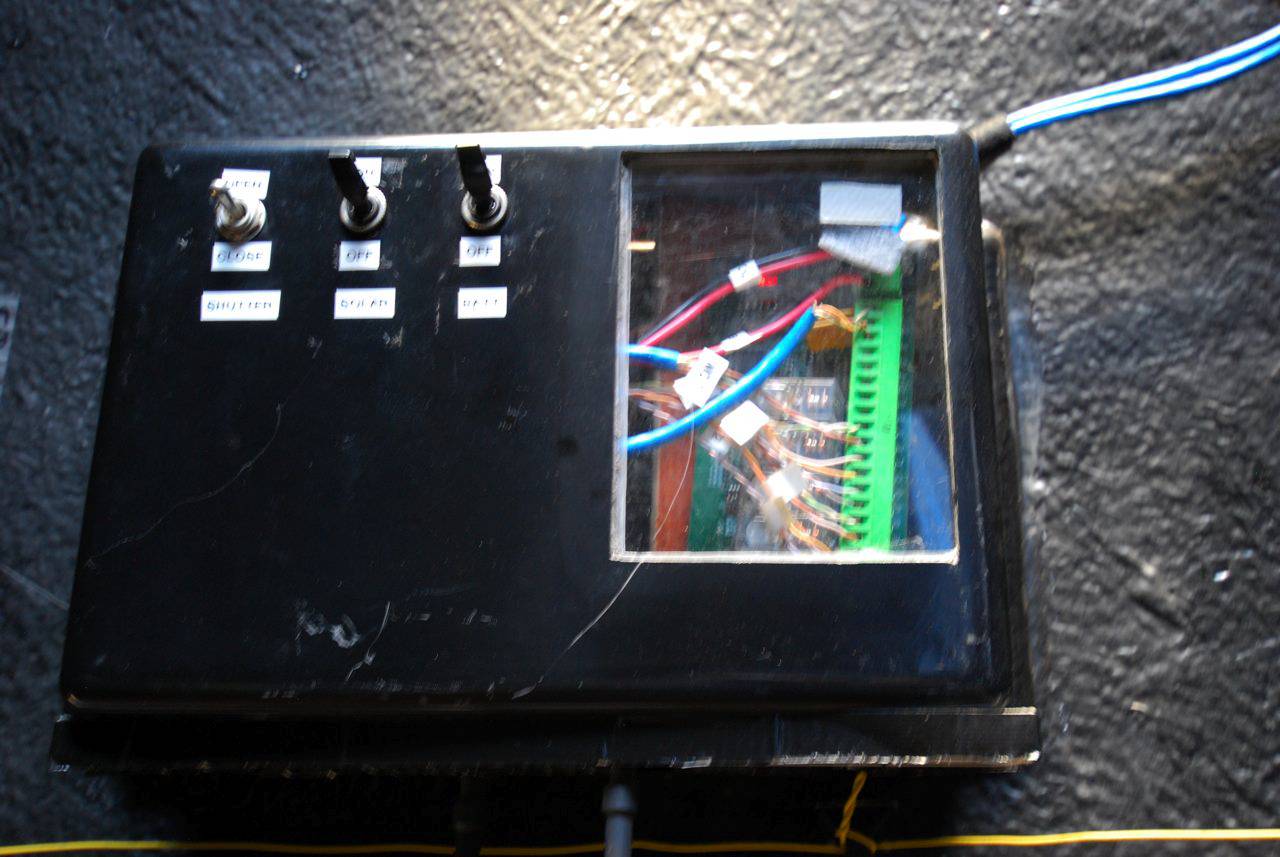 | At left, you can see the upper dome computer, which is mounted on the rotaing portion of the dome. The MaxDome II board is seen through the window on the irght. The three switches 1) open the dome shutters, 2) turn on or off the upper dome computer, and 3) connect or disconnect the dome charging power supply (formerly a solar panel, but now a separate wall-connected DC power supply). |
| At right, you can see the MaxDome II computer board. Two identical boards are used for upper and lower dome control. The terminal strips along the bottom edge provide connections to the dome motors, sensors, etc., as well as power and charger connections (4-terminal strip at bottom right). Relays, seen in the center of the board, are used to switch power to the dome motors. The MaxDome II observatory computer system was developed and is sold by Diffraction Limited. |  |
 | As noted above, the two identical dome computers communicate via radio frequency (RF), with the lower dome computer connected also to the main observatory computer. Each of the computers has its own sealed lead-acid (7.5 AH) battery and its own charger. |
The uppper dome computer is powered via a sealed lead-acid battery inside the black housing. The battery is charged when the dome is rotated to the park position (where it usually sits between sessions) via the two terminals seen sticking up from the wood block; each of these has a heavy-gauge wire that touches the sliding contacts mounted to the bottom of the upper dome computer. |  |
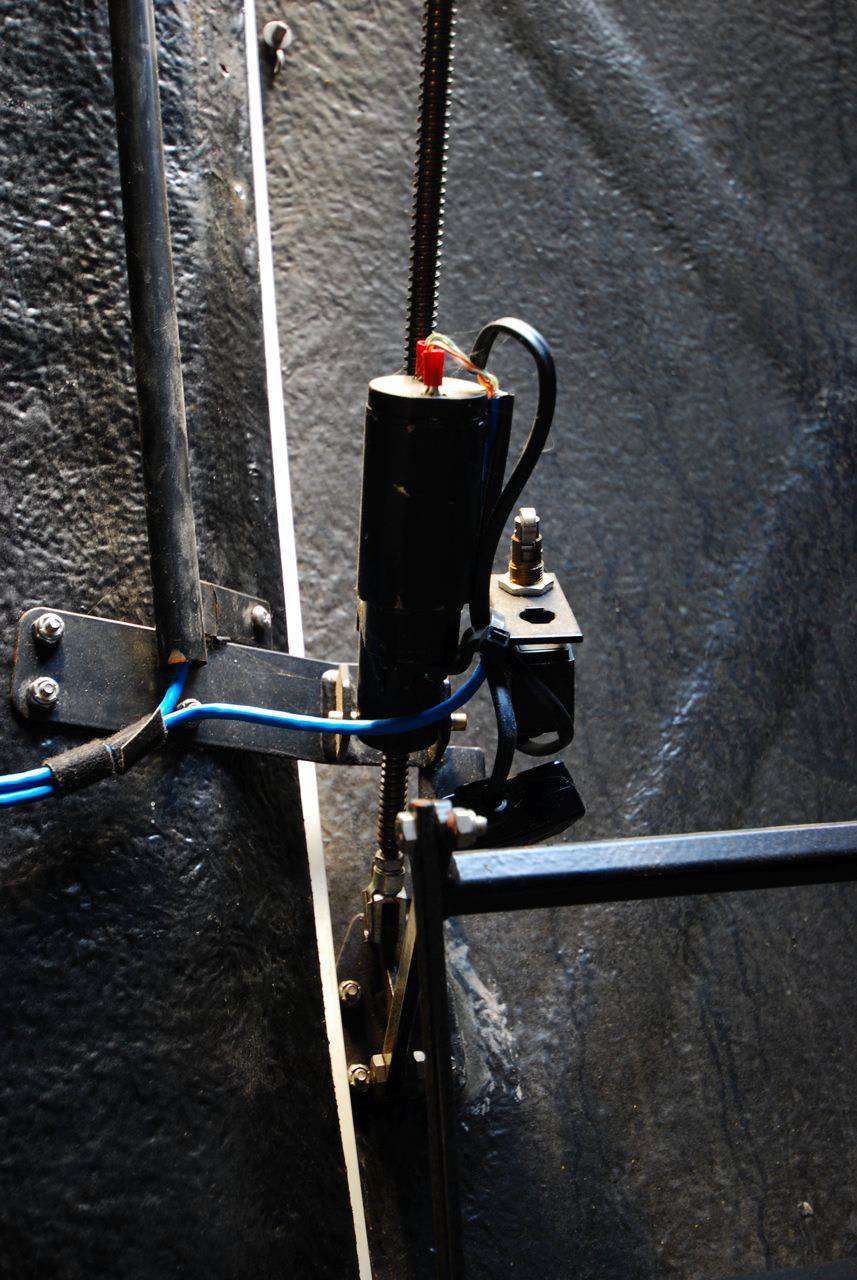 | At left, you can see the lower shutter motor mechanism, including the motor (round cylinder) which opens the lower shutter via a screw drive, and the limit switches. |
At right, you can see the mount for the "home" position microswitch. When the observatory is rotated to 282 degrees, the microswitch behind this mount (located at approximately 102 degrees) is depressed, sending a signal to the dome computer that the dome is in the "home" position. This allows unattended re-setting of the dome position. | 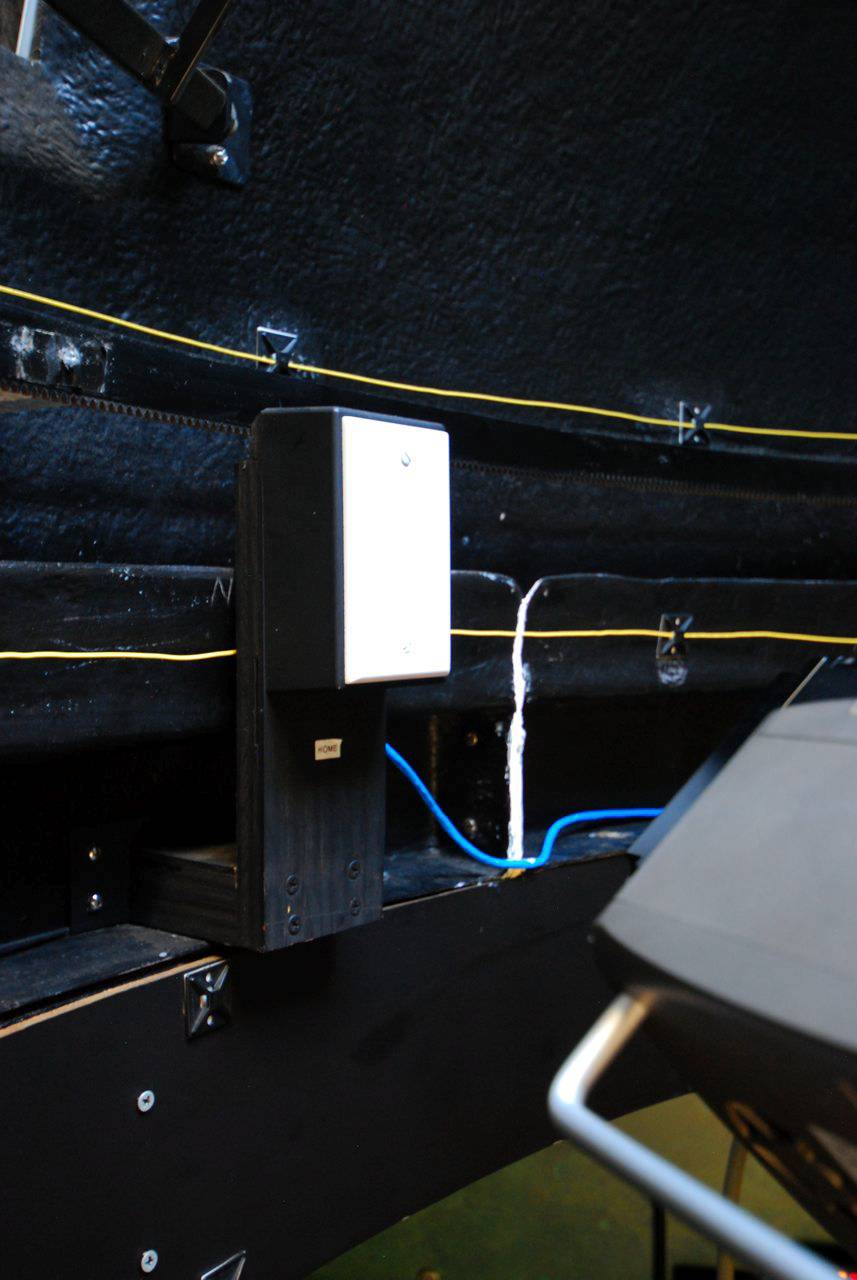 |
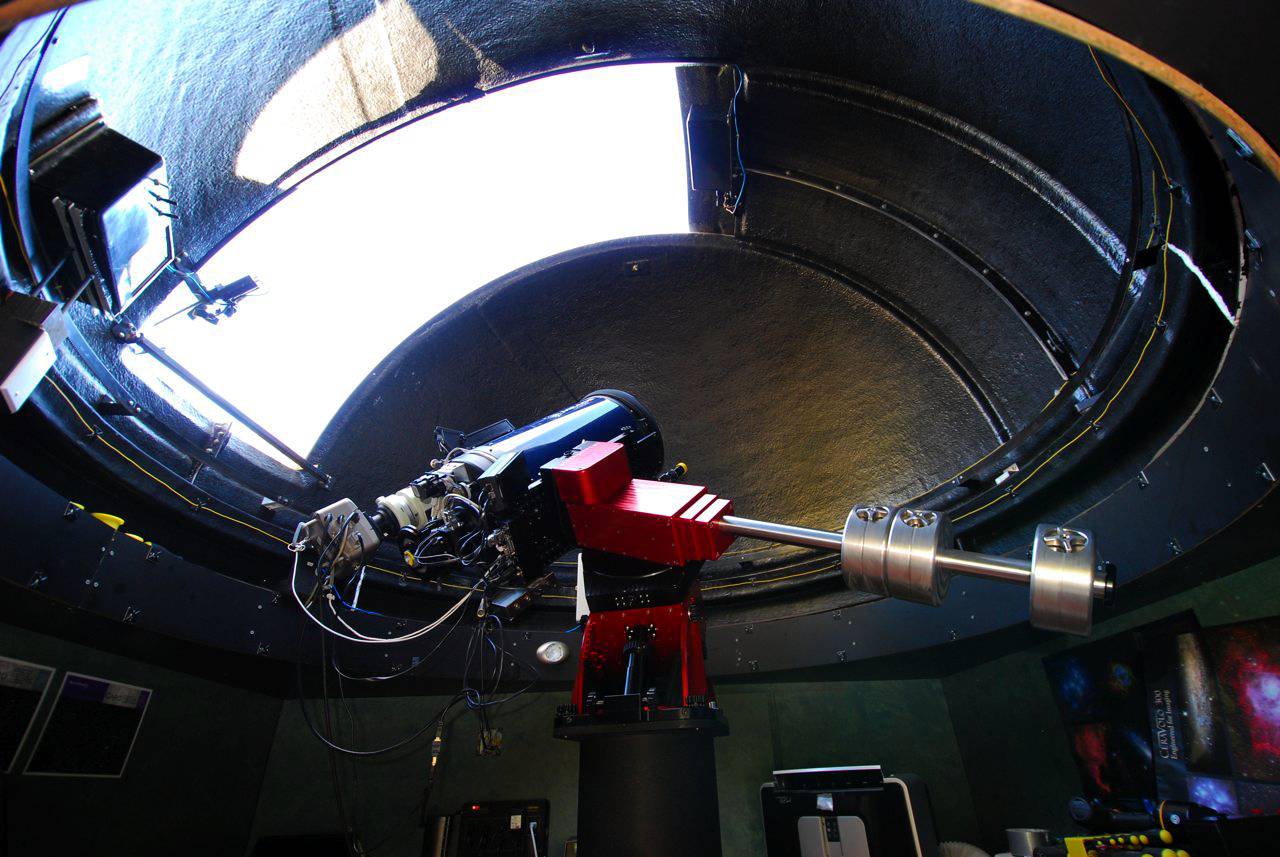 | At left, you can see the observatory dome, with the shutters open, in the "Park" position (82 degrees). At the far left of the image you can see the upper dome computer with the charging terminals, and just to its right you can see the lower shutter motor mechanism. At the top center of the picture, you can (barely) see the upper shutter motor mechanism . The center of the RA/Dec axes intersect very close to the center of the dome. As I have a 24" (extra long) counterweight shaft on the Paramount ME, there is not much clearance between the counterweights and the side of the dome (or between the cameras and the other side of the dome). I'll include photos later, showing just how tight a tolerance the dome is to my current set-up. |